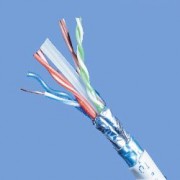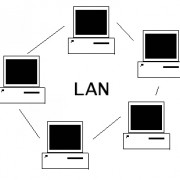LAN Protocols – All You Need to Know

LAN protocols are one of the most frequently used and talked about IT tools. Whether you work for a company that specializes in medical research or a company that is focused on furniture manufacturing, LAN protocols make a big difference in your day to day working environments. 802.11 is the spectrum that is used by most LAN networks.
WLAN Networks
 802.11a is a format of wireless local area network that never really developed. The sequence eventually progressed in the WLAN field from 802.11b to 802.11g to 802.11n. The 802.11n flavor of WLAN is the newest and fastest supported WLAN standard. Speeds on a 802.11n network can reach up to 110 MBPS. This is one of the fastest supported yet and will become even faster once more optimizations and upgrades are done over the next few years. The WLAN support fields operate off of the 5 GHZ frequency spectrum. WLAN protocols are constantly changing. It takes just two to three years before the next generation of the 802.11 networks will be up and running in a draft configuration. While this might seem like a long time, it goes by extremely quickly.
802.11a is a format of wireless local area network that never really developed. The sequence eventually progressed in the WLAN field from 802.11b to 802.11g to 802.11n. The 802.11n flavor of WLAN is the newest and fastest supported WLAN standard. Speeds on a 802.11n network can reach up to 110 MBPS. This is one of the fastest supported yet and will become even faster once more optimizations and upgrades are done over the next few years. The WLAN support fields operate off of the 5 GHZ frequency spectrum. WLAN protocols are constantly changing. It takes just two to three years before the next generation of the 802.11 networks will be up and running in a draft configuration. While this might seem like a long time, it goes by extremely quickly.
Networks switching
Most LAN protocols are switching over to WLAN. Companies are able to save space, wires, staff time as well as money switching to WLAN. There is less infrastructure to maintain and the office does not have to be rewired each time someone needs to change the configuration of their cubicle or office space. Best of all, the entire office is covered by the network instead of specific networks drops within the entire space of the office.
LAN Network Technology
 LAN protocols that are based upon traditional wired networks typically use CSMA/CD technology. This method of networking has the network devices such as a desktop workstation or laptop connect to printers, projectors and other network media. Busier networks will not be able to use this technology as network devices cannot send information at the same time. When a collision of data occurs, the two devices will time out for a randomized amount of time before attempting to resend their data. This is one reason why larger networks simply do not utilize this technology. However, in smaller offices it is useful as it is not nearly as difficult to setup and collisions do not occur often.
LAN protocols that are based upon traditional wired networks typically use CSMA/CD technology. This method of networking has the network devices such as a desktop workstation or laptop connect to printers, projectors and other network media. Busier networks will not be able to use this technology as network devices cannot send information at the same time. When a collision of data occurs, the two devices will time out for a randomized amount of time before attempting to resend their data. This is one reason why larger networks simply do not utilize this technology. However, in smaller offices it is useful as it is not nearly as difficult to setup and collisions do not occur often.
Token Passing
A token passing network requires that the device have a special token before it can transmit data. One device at a time can have the token and the token cannot be shared with more than one device. Once one device has transmitted its data, the next device will receive the token. Delays are smaller than the CSMA/CD technology as well as easier to predict in length. Token passing still does not allow for full network utilization but is much more useful on larger networks.
When you are trying to utilize LAN protocols, understanding LAN is a large part of it. Do not forget how the difference LAN protocols work and which technology is the best for your network.

